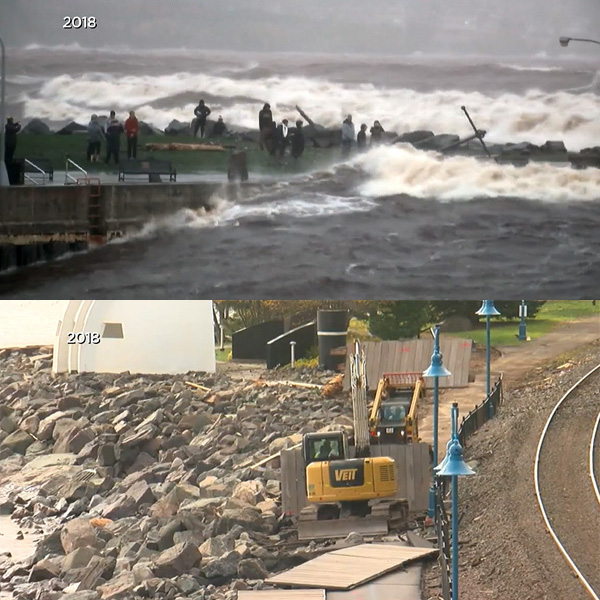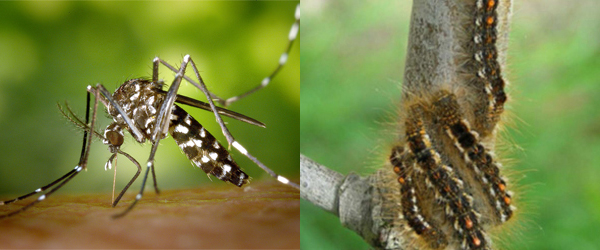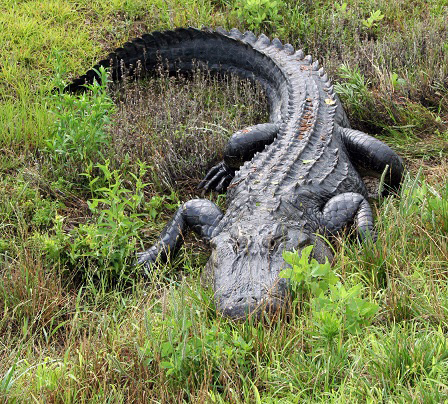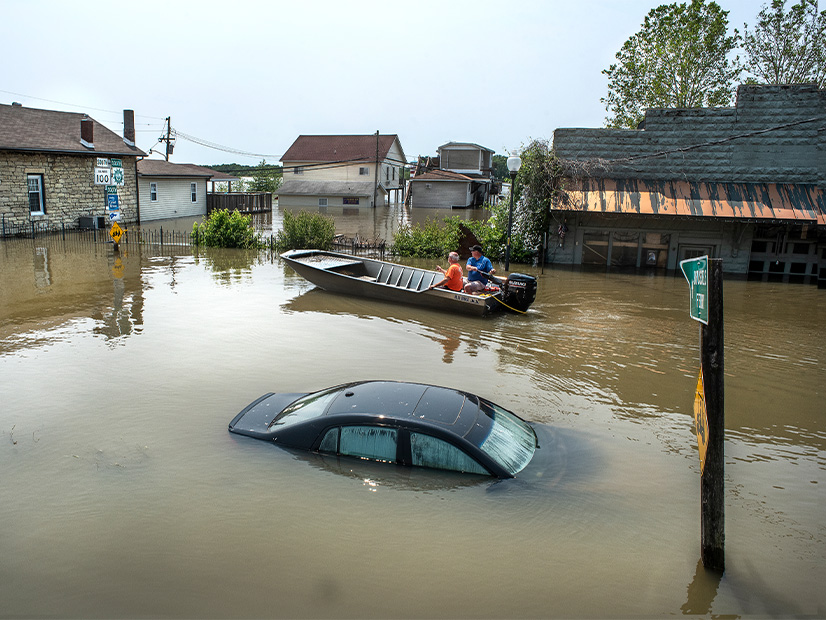Last week’s report from the U.N. Intergovernmental Panel on Climate Change (IPCC) hit home across the U.S. as dozens of news outlets published stories on how their regions are being affected.
The 3,675-page report said that climate threats have increased significantly since the U.N. reported in 2014 that climate change was having a “relatively small” effect on human health. (See IPCC Climate Report: ‘Half Measures No Longer an Option’.) The coverage of the new report makes clear that the impacts of climate change are being felt in every region of the U.S.
Here’s a roundup:
Florida & Gulf Coast
The Miami Herald noted that although the report had a global focus, “Florida was repeatedly used as an example of a place where the impacts of climate change were already being felt, both economically and environmentally.” It cited “tidal flooding from higher sea levels, even on perfectly sunny days; … hotter days and nights; more harmful algal blooms and mosquito-borne illnesses; stronger and wetter hurricanes; and less productive crops, livestock and fisheries.”
 Erosion from storms in 2017-18 forced a $16 million reconstruction of the Lakewalk along Lake Superior in Duluth, Minn. | WCCO
Erosion from storms in 2017-18 forced a $16 million reconstruction of the Lakewalk along Lake Superior in Duluth, Minn. | WCCOThe IPCC noted that tidal flooding resulted in the loss of $465 million in real estate value in the Miami-Dade market between 2005 and 2016 and contributed to “climate gentrification,” the displacement of poor residents in higher elevations.
An Associated Press story on the report focused on the Gulf Coast, citing the devastation of Hurricane Laura in 2020 and Hurricane Ida in 2021 and the more than 50 inches of rain that hit the Texas coast in Hurricane Harvey in 2017 — a storm cited as a case study in the IPCC report.
Republican legislators in Gulf Coast states have been more willing to support adaption to climate change, such as higher roads and sea walls, than efforts to reduce greenhouse gas emissions, it said. On March 1, the Republican-controlled Florida House of Representatives rejected the inclusion of clean-energy measures in a bill to address sea level rise and flooding.
The Tampa Bay area is considered one of the most vulnerable places in the U.S. for storm surges. The city of Miami Beach has spent more than $500 million on a system to pump water off the island, and Miami could spend potentially billions on its own effort to address sea level rise and limit saltwater intrusion into freshwater supplies.
Climate scientist Daniel Babin lamented last week that warmer winters in Louisiana mean fewer days qualify as “gumbo weather” — temperatures below 50 degrees Fahrenheit.
A more serious threat: “Coastal Louisiana residents are already on the frontlines of more intense hurricanes, rising seas, flood-inducing rain showers and extreme heatwaves due to climate change,” the U.S. Geological Survey said. By the end of the century, temperatures in Louisiana could be an average of 12 degrees higher, a recipe for even worse storms.
West & Southwest
The San Francisco Examiner noted that “record droughts, scorching wildfires, rising seas and blistering heat waves have become benchmarks of this new normal” in the Bay Area.
Although San Francisco announced a plan last year to reach net-zero emissions by 2040, the Examiner said the city’s “ability to persuade nearly a million residents to wean off fossil fuels swiftly has yet to be seen. Despite bans on natural gas in new buildings and the city’s investment in programs like CleanPowerSF [a community choice aggregation program to increase use of renewable energy], many San Franciscans still depend heavily on fossil fuels to power their homes, cars and offices.”
On the positive side, the Examiner cited the Crissy Field wetlands restoration project, which converted a former military base back to a tidal marsh.
In the Southwest, the last two decades have been the driest in the last 1,200 years, and spring rainfall could drop by another 20% by the end of the century, with river flows falling 50% by 2100. Reductions in water runoff has increased the salinity of Pyramid Lake in Nevada, reducing fish biodiversity.
Further north, a lack of snow is threatening northern Washington’s cross country ski trails.
Midwest
In Iowa, scientists say warming winters have allowed the Asian Tiger mosquito — which can transmit diseases like dengue fever — to set up residence in three counties after emigrating to the U.S. from Southeast Asia over 30 years ago. Elsewhere in the Midwest, there is concern that climate change will result in more invasive plants, pests and pathogens.
And researchers in Wisconsin last week reported that the state’s average nighttime low temperature rose between 4 and 7 F between 1950 and 2020.
Although the Great Lakes region is not currently prone to wildfires, rising seas or drought, it is facing worsening rainstorms. In southeast Michigan, the Great Lakes Water Authority has estimated it will cost as much as $20 billion to build stormwater infrastructure capable of avoiding the kind of floods that damaged tens of thousands of homes last summer.
In Duluth, Minn., erosion from storms in 2017 and 2018 forced a $16 million reconstruction of the Lakewalk along Lake Superior. Meanwhile, some Minnesota towns have begun the use of pervious pavement to reduce stormwater runoff.
New England
Hanover, N.H., has decided to end its annual Occom Pond Party — where thousands of participants celebrated on the frozen pond with ice castles and snow sculptures — because of unpredictable weather that had resulted in cancellations or postponements for seven consecutive years.
 Climate change is bringing insects such as the Asian Tiger mosquito and browntail moth caterpillars to northern climes. | U.S. Center for Disease Control and Prevention, Maine Center for Disease Control & Prevention
Climate change is bringing insects such as the Asian Tiger mosquito and browntail moth caterpillars to northern climes. | U.S. Center for Disease Control and Prevention, Maine Center for Disease Control & PreventionNew Hampshire is also seeing increasing flooding and, for the first time, the southern pine beetle — previously known in Central America and the southern U.S. — which can kill pine trees.
In Maine, 2021 saw the worst infestation yet of browntail moths, which can kill hardwood trees and shrubs and whose hairs can cause breathing problems and poison ivy-like skin rashes.
A recent Vermont Public Radio-PBS poll found 58% of residents surveyed expect climate change to have a “major” impact on the state over the next 30 years. Already some ski slopes are at risk from a lack of snow.
Mid-Atlantic & Carolinas
In North Carolina, increasing temperatures mean alligators could expand their footprint further inland, away from the swampy coastal areas they now call home. On the barrier islands of the Outer Banks, there is concern over homes falling into the ocean because of beach erosion.
 Alligators, like this 12-foot 700-plus-pound specimen, could expand their footprint further inland due to climate change. | North Carolina Wildlife Resources Commission
Alligators, like this 12-foot 700-plus-pound specimen, could expand their footprint further inland due to climate change. | North Carolina Wildlife Resources CommissionIn Charleston, S.C., officials are considering an 8-mile-long seawall to protect the historic city from hurricane surges and higher tides. The South Carolina Office of Resilience, formed following severe floods between 2015 and 2018, is developing a hazards report for the state. Planning for a rail yard addition at the state Ports Authority’s Leatherman Terminal in North Charleston is taking into account a future of sea level rise.
New Jersey officials have recorded more than 90 forest fires in 2021 — this before its normal fire season begins in mid-March.
Meanwhile the U.S. Government Accountability Office reported last week that nearly one-third of the hazardous chemical facilities in the country are at risk from climate-driven floods, storms and wildfires.
And a new study in the journal Nature found that climate threats “can compound existing stresses on the revenues and expenditures of local governments, revealing potential risks to fiscal stability.”


